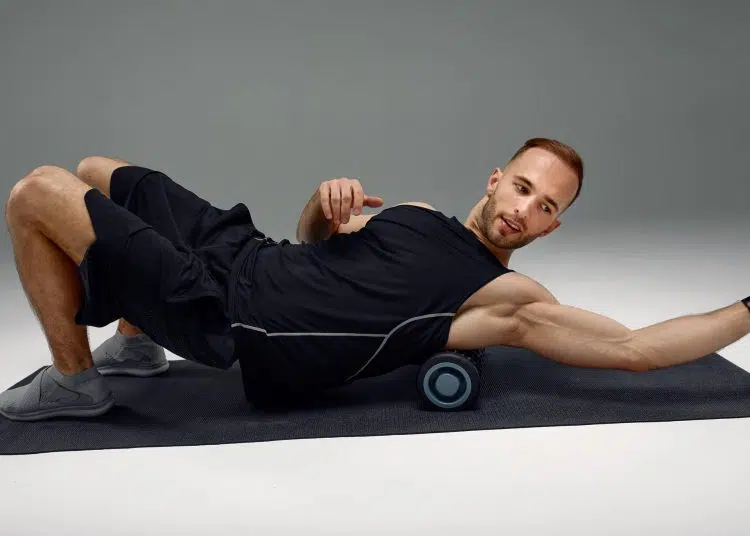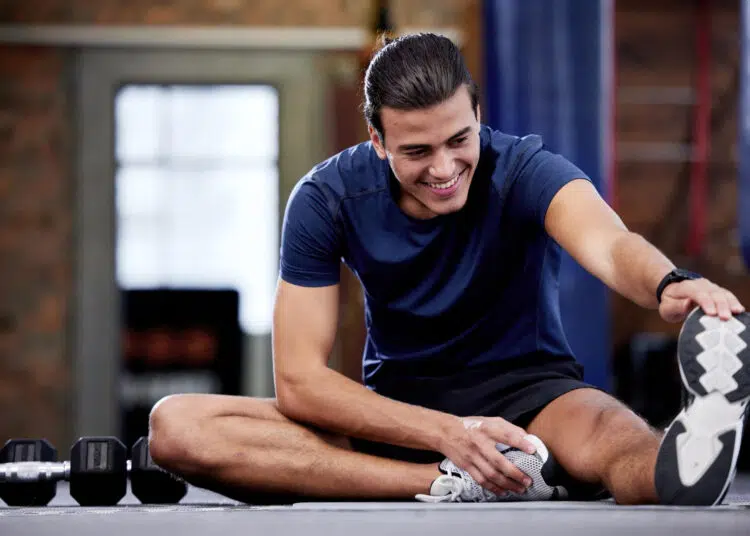Training for a particular objective can feel like a race against time. You constantly push yourself in and outside the gym to get the best bang for your buck. However, most people forget that you break muscle tissue during a workout, and your muscles grow bigger and stronger when you are resting.
Even though I have been training for over 17 years, I still struggle to take a day off from the gym. Unlike most people, I don’t feel guilty about taking a day off; I just feel super bored and unproductive.
Recent developments in exercise literature have got me really excited. A 2024 scientific review published in the Journal of Human Kinetics concluded that active recovery strategies like light aerobic cardio or low-volume power training may enhance recovery compared to passive rest and may even provide a performance-boosting effect. (1)
This was all I needed to know to embark on my next challenge — replacing the conventional passive rest days with active recovery for 60 days.
In this article, I share all the details of my active recovery routine, including their effects on my overall performance, recovery time, and injury rates. I will also share tips on how to implement active recovery into your own training.
Understanding Active Recovery

Level Up Your Fitness: Join our 💪 strong community in Fitness Volt Newsletter. Get daily inspiration, expert-backed workouts, nutrition tips, the latest in strength sports, and the support you need to reach your goals. Subscribe for free!
So, what is active recovery? I’m glad you asked.
Many people spend their rest days, which usually collides with their days off from work, lying on the couch and watching TV. This is a form of passive recovery. Active recovery, on the other hand, involves moving around and staying physically active, even if that is for 30 minutes. Think light jogs, yoga, swimming, hiking, foam rolling, biking, and Tai Chi.
These low-intensity activities boost blood circulation throughout the body, helping deliver oxygen and essential nutrients to the muscles required to promote recovery and growth. Simultaneously, they help remove metabolites from the muscle tissue, which can help reduce muscle soreness and stiffness.
Every serious lifter has experienced delayed onset muscle soreness (DOMS); active recovery protocols can help alleviate the discomfort by engaging the troubled muscles and improving performance. (2)
Improved flexibility is one of the most underrated features of active recovery, especially when you opt for yoga flows or mobility routines. This has a direct carry-over to overall functionality, improving your performance in daily activities and workouts.
Finally, most would agree that intense training is as mentally taxing as it is physically challenging. Active recovery, especially outdoor sessions, can be incredibly relaxing. It can also lower levels of perceived exertion, reduce stress reduction, restore mental fatigue, and improve mood, self-esteem, and perceived health. (3)
The 60-Day Active Recovery Experiment
Before you start a new fitness challenge, you must always establish a baseline to make tracking easier and ensure you are moving in the right direction.
I follow a six-day training split, hitting each muscle group twice weekly. I like to believe that my overall strength and cardiovascular endurance are pretty decent. However, I deal with nagging elbows and bicep tendon pain whenever I push myself too hard in the gym.
Remember I talked about lying on the couch and watching TV on rest days? Well, that’s me. Typically, the only activity I do on a rest day is getting off the couch and going out to eat my cheat meal.
As you can probably tell, committing to a 60-day active recovery challenge was a big deal for me. Here is a week-by-week summary of how it went down:
Week One & Two: Finding My Footing
Since I only take one day off from training, switching to active recovery didn’t sound too big of a change initially. However, the mental shift involved in adopting active recovery became apparent when it was time to go outdoors for a run.
Instead of sticking to the same activity for eight weeks, I decided to try a new active recovery protocol each week. Nonetheless, I stuck to the same exercise duration throughout the challenge — 30 minutes. Anything more or less just didn’t feel right to me.
Week Three & Four: Upping the Ante
I started noticing an improvement in my recovery in the third week. I usually take a day off from training after a leg workout and can feel the soreness for three to four days after a high-volume session. However, the DOMS were down to one to two days after I incorporated active recovery into my routine.
Furthermore, 30 minutes of exercise also helped me unwind and relax after a hard week of work. I took another major step in Week Four — I made my wife take up active recovery, too. Thirty minutes of foam rolling and yoga sessions together is an incredibly powerful way to bond.
Weeks Five To Eight: Fine Tuning
One of the best things about active recovery sessions is that they don’t exert you mentally or physically. You don’t need to count reps, sets, or rest time (unless you really want to). I was settled into the active recovery routine in the second week. After that, it was all about fine-tuning minor details to better serve my preferences and objectives.
Also, I missed the gym on a couple of days during these 60 days. However, I did the 30-minute active recovery session to make up for them. Although these sessions are not supposed to get you the same muscle stimulation as resistance training, they ensure you are constantly moving your body. It also lowers the guilt of missing a workout.
Level Up Your Fitness: Join our 💪 strong community in Fitness Volt Newsletter. Get daily inspiration, expert-backed workouts, nutrition tips, the latest in strength sports, and the support you need to reach your goals. Subscribe for free!
I recommend my personal training clients gradually increase the difficulty of these active recovery sessions to keep their workouts interesting. That said, don’t take yourself to a point of exhaustion. These sessions are about recovery and not inducing fatigue.
Squeezing in a 30-minute active recovery session on rest days might require some crafty time management skills. You must be flexible and adjust your weekend plans to incorporate these workouts. Feel free to shrink the longer sessions into bite-sized five to 10-minute workouts, if needed, but don’t skip them altogether.
Results of the Active Recovery Challenge: What Happened to My Fitness
Here is how active recovery improved my overall fitness:
Performance Improvements
Although scientific literature backs the benefits of active recovery, I didn’t know what to expect before starting this 60-day challenge. However, performance improvements started kicking in around the fourth week.
Muscle soreness between workouts was down considerably, which helped me push myself harder in the gym. I hit new personal bests on several compound and isolation exercises during the final weeks of this challenge. That’s not all; all the 30-minute recovery sessions significantly improved my cardiovascular endurance, improving my performance in HIIT workouts.
Notably, I didn’t hit a plateau during these two months. This could be the result of adopting active recovery or because it aligned with a mesocycle, where I increased my overall training volume.
Recovery Time
Since these 60 days were all about maximizing recovery, I paid close attention to how I felt before, during, and after workouts. As I’ve said before, my post-training muscle soreness was down significantly. Besides that, switching to active recovery changed your mindset.
Since I was supposed to move my body for at least 30 minutes seven days a week, it put me in an active mental state, and I was overall more energized and motivated. I never dreaded chored or running errands during these 60 days.
My recovery time between training sessions was also down, and I could take on the next workout sooner than before.
Injury Prevention
As someone who has been weight training for almost two decades now, I’m extremely careful during my workouts and do everything in my power to minimize the risk of injuries. But things still happen.
I did a lot of foam rolling, mobility drills, and yoga flows during this 60-day active recovery challenge, which definitely helped my body heal more effectively and improved my overall functionality and performance.
The improved pliability made me feel comfortable during more challenging lifts, and thankfully, I didn’t encounter any nagging sprains, pains, or injuries during these two months. (Knock on wood.)
Finding the Balance: Rest vs. Active Recovery
After witnessing the benefits of active recovery firsthand, I’ve made it a part of my lifestyle and will be sticking to it for the long term. I would highly encourage you to do the same.
That said, you must learn to listen to your body to decide what is better for you on a particular day. For instance, you should skip an active recovery day and opt for complete rest if you feel overly sore or exhausted. On the other hand, you can engage in low-intensity exercise on most other days when you have a little gas in the tank.
Pushing too hard for too long can increase the probability of hitting a plateau, burning out, or even injuries.
Experiment with different forms and durations of active recovery and determine what works best for you. Remember, the goal here isn’t to push yourself to the brink. It is to stay active and boost blood flow throughout the body for optimal recovery.
Note: The content on Fitness Volt is for informative purposes only. Do not take it as medical advice to diagnose, prevent, or treat health problems. If you’re suffering from a health issue, are pregnant, or are under 18 years old, you should consult your physician before starting any new supplement, nutrition, or fitness routine.
Conclusion
Active recovery is one of the best lifestyle changes a trainer can make to improve their overall health and well-being. The best thing about active recovery sessions is that there are no fixed standards for it. The activity, duration, and intensity will vary depending on your experience level, preferences, and objectives.
Start small, let’s say with a five-minute walk around your block, and slowly add to it until you feel you’re doing enough. Best of luck!
If you have any questions about active recovery or need help implementing it into your routine, please drop them in the comments below, and I’ll be happy to help!
References:
- Sousa, C. A., Zourdos, M. C., Storey, A. G., & Helms, E. R. (2024). The Importance of Recovery in Resistance Training Microcycle Construction. Journal of human kinetics, 91(Spec Issue), 205–223.
- Ortiz, R. O., Jr, Sinclair Elder, A. J., Elder, C. L., & Dawes, J. J. (2019). A Systematic Review on the Effectiveness of Active Recovery Interventions on Athletic Performance of Professional-, Collegiate-, and Competitive-Level Adult Athletes. Journal of strength and conditioning research, 33(8), 2275–2287.
- Gladwell VF, Brown DK, Wood C, Sandercock GR, Barton JL. The great outdoors: how a green exercise environment can benefit all. Extrem Physiol Med. 2013;2(1):3. Published 2013 Jan 3. doi:10.1186/2046-7648-2-3











